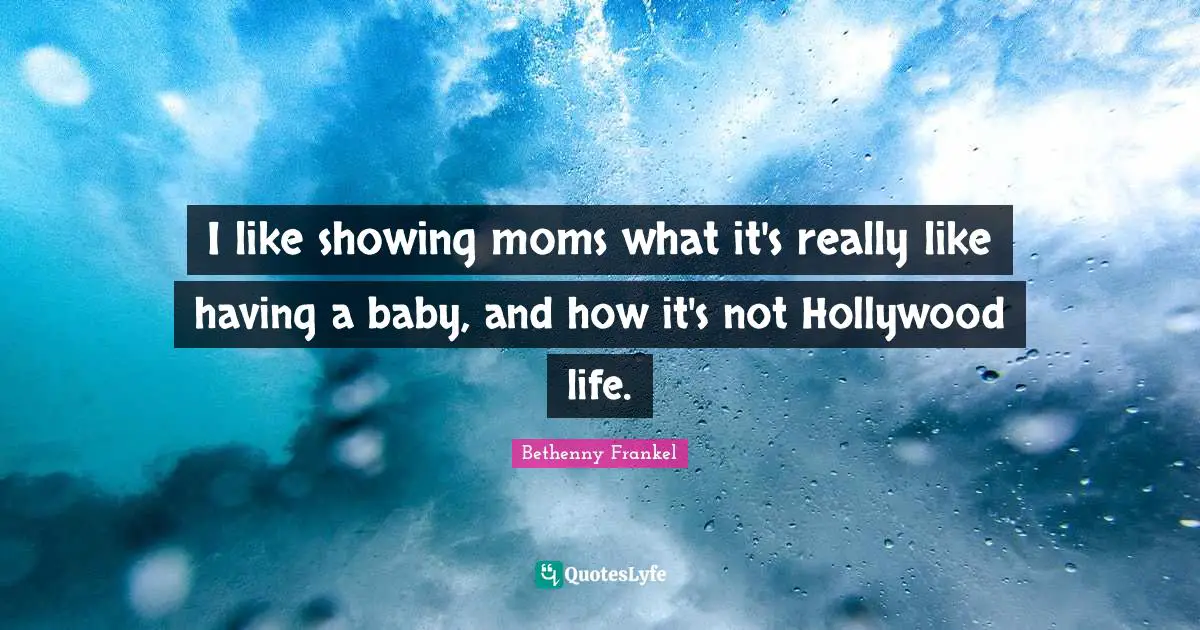What It S Really Like On An
What It's Really Like On An is a phrase used to describe the experiences and challenges of being a member of a particular group or participating in a specific activity. For example, "What It's Really Like On An Expedition to Antarctica" would provide an account of the hardships and rewards of exploring the icy continent.
Understanding the realities of different situations is crucial for making informed decisions and developing empathy. It helps us appreciate the struggles and triumphs of those who have embarked on unique journeys or joined specialized communities.
Historically, such accounts have been invaluable in shaping our perceptions and expanding our knowledge. Explorers' journals, memoirs of war veterans, and insider perspectives on marginalized groups have all enriched our understanding of the human experience. This article will delve into the specific challenges and rewards of being a member of an organization, drawing on real-life anecdotes and research findings to provide a comprehensive overview.
Read also:Alanna Ubach Nude The Truth Behind The Headlines And Sensational Claims
What It's Really Like On An
Understanding the realities of being a member of a particular group or participating in a specific activity is crucial for making informed decisions and developing empathy. It helps us appreciate the struggles and triumphs of those who have embarked on unique journeys or joined specialized communities.
- Challenges
- Rewards
- Culture
- Values
- Relationships
- Growth
- Identity
- Purpose
- Impact
These aspects are deeply intertwined, shaping the overall experience of being a member of a group or participating in an activity. The challenges and rewards, for example, often go hand in hand, as do the culture and values. Understanding these aspects provides a comprehensive view of the topic, allowing us to better appreciate the complexities and nuances involved.
Challenges
Challenges are an intrinsic part of "What It's Really Like On An." They are the obstacles, difficulties, and trials that one encounters when participating in a particular group or activity. These challenges can be physical, emotional, intellectual, or social in nature.
Challenges are often what make an experience transformative and meaningful. They test our limits, push us to grow, and help us develop resilience. Overcoming challenges can give us a sense of accomplishment and satisfaction, and it can also strengthen our bonds with others who have faced similar challenges.
For example, in the context of a sports team, challenges might include rigorous training, intense competition, and the pressure to perform. In the context of a creative endeavor, challenges might include overcoming creative blocks, dealing with criticism, and finding the time and resources to pursue one's passion.
Understanding the challenges associated with a particular group or activity can help us make informed decisions about whether or not to participate. It can also help us to better prepare for the challenges we may face and to develop strategies for overcoming them.
Read also:Debapriya Tanvi Paul Nude Debunking Myths And Understanding The Truth
Rewards
Rewards are an integral part of "What It's Really Like On An." They are the positive outcomes, benefits, and satisfactions that one experiences when participating in a particular group or activity. Rewards can be intrinsic, such as a sense of accomplishment or personal growth, or extrinsic, such as recognition, praise, or material rewards.
Rewards are important because they motivate us to participate in certain activities and to continue to strive for improvement. They can also help us to develop a sense of identity and belonging. For example, in the context of a sports team, rewards might include winning games, receiving recognition for individual performance, or simply the satisfaction of being part of a team. In the context of a creative endeavor, rewards might include completing a project, receiving positive feedback from others, or simply the joy of creating something new.
Understanding the rewards associated with a particular group or activity can help us make informed decisions about whether or not to participate. It can also help us to set realistic expectations and to develop strategies for achieving our goals. Furthermore, understanding the connection between rewards and "What It's Really Like On An" can help us to appreciate the value of different experiences and to make choices that are in line with our values and interests.
Culture
Culture is a critical component of "What It's Really Like On An" It shapes the values, norms, beliefs, and behaviors of a group or community, and it has a profound impact on the experiences and challenges that members face. For example, the culture of a sports team might emphasize teamwork, discipline, and hard work. This culture would likely lead to a positive and supportive environment where members feel valued and motivated to succeed. In contrast, a culture that is characterized by individualism and competition might lead to a more stressful and isolating environment.
Culture is not static, but rather it is constantly evolving and changing. This is due to both internal and external factors, such as the changing needs of the group, new members joining, and interactions with other cultures. As a result, "What It's Really Like On An" is also constantly changing. For example, the culture of a workplace might change as the company grows and expands. Similarly, the culture of a community might change as new residents move in and the demographics of the community change.
Understanding the culture of a group or community is essential for understanding "What It's Really Like On An" It can help us to make informed decisions about whether or not to join a group, and it can also help us to better understand and appreciate the experiences of others. Furthermore, understanding the culture of a group or community can help us to develop strategies for working effectively within that culture.
Values
Within the tapestry of "What It's Really Like On An," values serve as guiding principles that shape the experiences, challenges, and rewards encountered by individuals. They are the bedrock upon which cultures are built and the compass that navigates the complexities of group dynamics.
- Core Values
At the heart of "What It's Really Like On An" lie core values, the fundamental beliefs and principles that define the group's identity and purpose. They guide decision-making, establish behavioral norms, and create a shared sense of direction. For example, a sports team might prioritize values such as teamwork, perseverance, and sportsmanship.
- Shared Values
Shared values are those that are held in common by all members of a group or community. They create a sense of belonging and unity, fostering cooperation and mutual support. For example, a community might share values such as respect, diversity, and environmental consciousness, shaping the way its members interact with each other and their surroundings.
- Personal Values
Personal values are the unique beliefs and principles that guide an individual's thoughts, feelings, and actions. They influence how individuals make decisions, interact with others, and shape their overall experience of being part of a group or community. For example, an individual might value honesty, integrity, and compassion, which can influence their behavior within the group.
- Evolving Values
Values are not static, but rather evolve over time in response to changing circumstances, new experiences, and societal shifts. This evolution can lead to both positive and negative consequences for a group or community. For example, a company might shift its values towards innovation and adaptability to keep pace with technological advancements, leading to increased creativity and growth.
In conclusion, values play a multifaceted role in shaping "What It's Really Like On An." Core values provide a foundation for group identity and purpose, shared values foster unity and cooperation, personal values influence individual experiences, and evolving values ensure adaptation and growth. Understanding the values associated with a particular group or community is essential for making informed decisions about whether or not to join, and for navigating the challenges and rewards of membership.
Relationships
Within the intricate tapestry of "What It S Really Like On An," relationships serve as both a foundation and a catalyst, shaping the experiences, challenges, and rewards encountered by individuals. They are the threads that connect members, creating a web of support, collaboration, and shared purpose.
Relationships within "What It S Really Like On An" can be diverse in nature, ranging from formal and hierarchical structures to informal and peer-to-peer connections. In sports teams, for example, relationships between players and coaches are crucial for fostering teamwork, discipline, and a shared vision of success. In workplace settings, relationships between colleagues can promote collaboration, innovation, and a positive work environment. Within communities, relationships between neighbors, friends, and family members create a sense of belonging, support, and shared values.
The absence or breakdown of relationships can have a detrimental impact on "What It S Really Like On An." In dysfunctional teams or workplaces, strained relationships can lead to conflict, reduced productivity, and a negative overall experience. Similarly, in communities plagued by social isolation or divisions, individuals may feel disconnected and unsupported, hindering their well-being and the overall health of the community.
Understanding the importance of relationships within "What It S Really Like On An" has practical applications in various domains. In organizational settings, leaders can prioritize fostering positive relationships among team members to enhance collaboration and productivity. Community organizers can create initiatives that promote social connections and reduce isolation. Individuals seeking to enhance their experiences within groups or communities can actively build and nurture relationships with others, contributing to a more positive and fulfilling environment.
Growth
Within the dynamic tapestry of "What It S Really Like On An," growth emerges as a transformative force, shaping the experiences, challenges, and rewards encountered by individuals. It encompasses a multifaceted journey of personal and collective evolution, encompassing various dimensions of human development and potential.
- Personal Growth
Participation in a group or activity can foster significant personal growth. Individuals may develop new skills, enhance their knowledge, and cultivate a greater sense of self-awareness. For instance, joining a sports team can promote physical fitness, teamwork, and resilience.
- Professional Growth
Groups and activities can provide platforms for professional development. Members may acquire valuable industry knowledge, expand their networks, and gain leadership experience. For example, active participation in a professional association can enhance career prospects.
- Social Growth
Social growth flourishes within groups and activities, as individuals interact with others from diverse backgrounds and perspectives. This interaction can foster empathy, communication skills, and a broader worldview. For example, volunteering in a community organization can promote a sense of social responsibility and connectedness.
- Spiritual Growth
Certain groups and activities can facilitate spiritual growth, offering opportunities for introspection, self-reflection, and a deeper connection to one's values and purpose. For example, joining a meditation group can promote mindfulness and inner peace.
In conclusion, the concept of "Growth" plays a pivotal role in shaping "What It S Really Like On An." Through personal, professional, social, and spiritual growth, individuals embark on a transformative journey that enriches their lives, expands their horizons, and fosters a sense of purpose and belonging. This comprehensive understanding of growth highlights its multifaceted nature and underscores its significance in the context of human experience within groups and activities.
Identity
Within the intricate tapestry of "What It S Really Like On An," identity emerges as a fundamental thread, shaping the experiences, challenges, and rewards encountered by individuals. It encompasses a multifaceted sense of self, encompassing both internal and external dimensions, and plays a pivotal role in shaping one's experiences within groups and activities.
- Personal Identity
Personal identity refers to the unique and evolving sense of self, including one's beliefs, values, and aspirations. It is shaped by individual experiences, relationships, and cultural influences. For example, a member of a sports team may develop a strong sense of personal identity centered around their athletic abilities and team loyalty.
- Social Identity
Social identity encompasses the sense of belonging to a particular group or community. It includes shared values, norms, and beliefs, and can influence an individual's behavior and self-perception. For example, a member of a religious community may develop a strong social identity based on their shared faith and practices.
- Cultural Identity
Cultural identity refers to the shared beliefs, values, and practices of a particular cultural group. It encompasses language, customs, traditions, and can influence an individual's worldview and sense of belonging. For example, a member of an ethnic minority group may develop a strong cultural identity based on their shared heritage and experiences.
- Professional Identity
Professional identity encompasses an individual's sense of self in relation to their work or career. It includes their skills, knowledge, and values, and can influence their professional goals and aspirations. For example, a doctor may develop a strong professional identity based on their medical expertise and commitment to patient care.
These facets of identity are interconnected and fluid, constantly shaped by our interactions with others and the broader social, cultural, and economic context. Understanding the complexities of identity is essential for navigating the challenges and rewards of "What It S Really Like On An," and for fostering a sense of belonging and purpose within groups and communities.
Purpose
Within the intricate tapestry of "What It S Really Like On An," purpose emerges as a guiding thread, shaping the experiences, challenges, and rewards encountered by individuals. Purpose encompasses a sense of meaning and direction, providing motivation, resilience, and a deeper understanding of one's place within a group or activity.
Purpose is often closely intertwined with identity and values. Individuals who identify strongly with their group or activity are more likely to find purpose within it. For example, a member of a volunteer organization may derive a sense of purpose from contributing to a cause they deeply care about.
A clear sense of purpose can have a profound impact on "What It S Really Like On An." It can enhance motivation, leading to greater engagement, productivity, and a willingness to overcome challenges. Purpose can also foster a sense of belonging and community, strengthening relationships and creating a more positive overall experience.
Understanding the connection between purpose and "What It S Really Like On An" has practical applications in various domains. In organizational settings, leaders can cultivate a sense of purpose among employees by aligning their work with the organization's mission and values. This can lead to increased employee engagement, reduced turnover, and improved organizational performance. In educational institutions, educators can help students discover their purpose by providing opportunities for exploration, reflection, and service learning.
Impact
Within the intricate tapestry of "What It S Really Like On An," impact emerges as a powerful force, shaping the experiences, challenges, and rewards encountered by individuals. Impact encompasses the tangible and intangible effects of one's participation in a group or activity, both on a personal and collective level.
Impact is a critical component of "What It S Really Like On An" as it provides a measure of the significance and value of the experience. It can manifest in various forms, such as personal growth, professional development, social change, or community building. For example, a member of a volunteer organization may experience a profound sense of impact by witnessing the positive outcomes of their contributions.
Real-life examples abound, highlighting the transformative power of impact within "What It S Really Like On An." In the realm of education, students who participate in service-learning programs often report a heightened sense of purpose and a deeper understanding of social issues. In the workplace, employees who feel their work has a meaningful impact are more likely to be engaged, motivated, and productive.
Understanding the connection between impact and "What It S Really Like On An" has practical applications in various domains. In organizational settings, leaders can foster a culture of impact by aligning employee goals with the organization's mission and values. This can lead to increased employee satisfaction, reduced turnover, and improved organizational performance. In educational institutions, educators can incorporate experiential learning opportunities into their curriculum, allowing students to experience the impact of their knowledge and skills in real-world contexts.
In exploring "What It S Really Like On An," this article has delved into the multifaceted nature of group experiences and activities. Key insights emerged, highlighting the interplay of challenges and rewards, the significance of culture and values, and the transformative power of relationships and growth. These elements intertwine to shape personal identity, foster a sense of purpose, and ultimately determine the impact of one's participation.
As we reflect on these interconnected main points, it becomes clear that "What It S Really Like On An" extends beyond superficial experiences. It encompasses a profound journey of self-discovery, community building, and the pursuit of meaningful goals. Understanding these dynamics empowers individuals to make informed decisions about their involvement in groups and activities, maximizing their potential for personal enrichment and societal contribution. Ultimately, the significance of "What It S Really Like On An" lies in its ability to shape our lives, inspire growth, and connect us to a shared sense of purpose.



